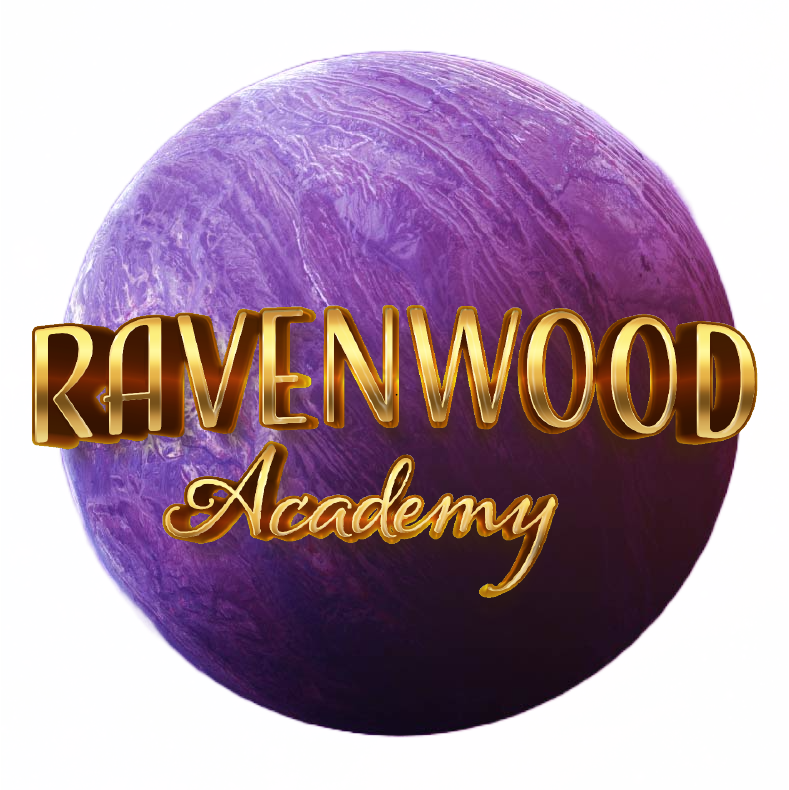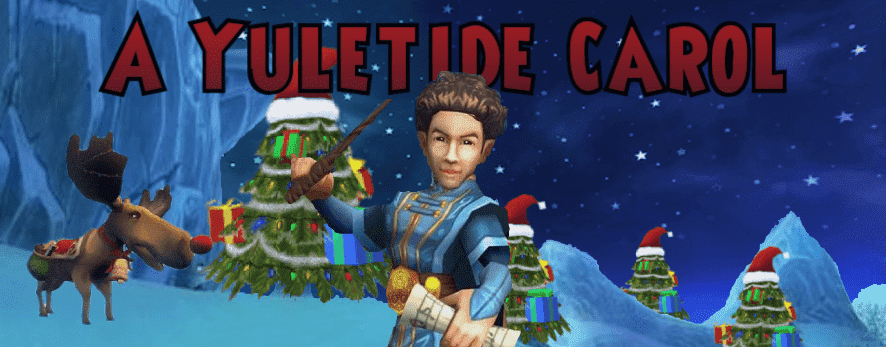Intended for Musician and Non-Musician Alike

It’s beginning to look a lot like Christmas, everywhere in the spiral. We sit by the glowing embers, drinking our hot chocolate, cuddling with our fuzzy kitten, when ho! – there’s Christmas music in the Bazaar! You run by the great tree near The Commons pool, through The Shopping District and take a peek into the yuletide scrolls, and in a wild frenzy, you decide to buy them all. ‘Tis the season, am I right? So now, the music is playing in your home, perfectly seasonal and festive.
Let’s take a look into these heart-warming music scrolls and see how well they rival Mariah Carey and examine the musical craftsmanship the composers at Kingisisle took arranging these holiday favorites.
https://www.youtube.com/watch?v=u92UQSI4NvM
“Jingle Bells” and “Yuletide Jingle”
Like snowflakes twinkling on the new-fallen snow, we begin with a glockenspiel and sleigh bells that set the festive tone. The piano glissandos, adding a new texture, heralding the melody, joyous and free. At 00:16 seconds in, the big band comes in. Heaven and nature sing as the trumpets and trombone begin to swing. The sax and percussion add such vibrant color, it really brings out a new Christmas wonder.
By 00:36 seconds, the first idea we heard with the twinkling and the melody being played on the piano develops, adding a new jazz band texture. It’s also worth noting the vibraphone playing a countermelody against the main jingle bells theme. This line arpeggiates the chord progression while the rest of the band plays.
With a strong, tutti finish, we enter a new section. The piano plays an impressive solo as the brass of the band stabs at some of the syncopated notes, adding emphasis. The saxophones take over the melody as the brass continues while the piano flourishes the piece with arpeggios. We are brought back to the first section we heard before a ritardando to the end.
Overall, our form was AABA, or in other words, we played our first section twice, played a new section, then went back to the original. In our culture, it’s very common to have Christmas songs played in a jazz style, even if we don’t know that it is. White Christmas and All I Want For Christmas is You are good examples with their jazz chords and interpretation.
Above is a simple arrangement of the piece “Jingle Bells.” The capital letters beneath each note match the pitch on your computer keyboard related to the Grand Playable Piano and Playable Toy Piano items found in the crown shop.
Notice the points of the music where it has the number 1 and number 2. In music, we typically call these “first” and “second endings.” The idea behind this is that you will go back to the beginning of the section, indicated by colon called “the repeat sign,” and play the same thing that you have just done before, but now with a variation on the ending. The first ending is called the “antecedent” phrase, because it does not resolve, setting up the theme’s repeat. The second phrase is the “consequent” phrase since it contains the resolution.
https://www.youtube.com/watch?v=8tIwlRqPx60

“Deck The Halls”
In a rather upbeat manner, we start off with a line of eighth notes with some sixteenth note syncopation played by the piano as the harp glissandos along. A wind instrument calmy takes the melody. The flutes play along, strengthening the fa-la-la-la-la-ing of the chorus. This pattern continues until the reeds join in to resolve the phrase.
Next, at 00:39 seconds in, the melody is handed to the bassoon. This personally reminds me of older family members like grandparents that have a deeprooted joy for Christmas. The wood blocks add emphasis to the articulation the bassoon displays, developing the melody. The clarinets rock back and forth between their notes, like little youngsters playing with their elders.
The strings delightfully swoon through, gaining the household’s attention. The bassoon adds ascending arpeggios and it appears like the family is talking to one another. The family seems pleased with each other, all ending in the same melody.
We have a ritardando that leads us into the next section. The Commons theme begins to play, proclaiming that Christmas shall be brought to Wizard City with great fanfare. The Commons theme replaces the Deck The Halls theme seamlessly, because of the melody’s similar contour and rhythm, as some of the original melody still shines through.
In this simple arrangement of “Deck The Halls,” we play with the idea of different voices having different parts of the melody. At first, the treble staff rings out the melody as the bass staff holds the primary note of the chord, known as the “tonic” and also the “root of the chord.” We seamlessly switch the melody to the bass, giving emphasis on “fa-la-la-la-la,” but immediately switch back to the treble to complete the resolution.
The words at the end of the music, “D.S. al fine” means to go back to the sign and stop where it says “fine,” meaning “finish.” Unlike “Jingle Bells,” the resolution is built into the music. This is what we call “ternary form,” where we end with the section we started with, having a contrasting section between them.
https://www.youtube.com/watch?v=5zymp2tyEbc
“Carol of The Bells”
Dramatically, the piano and sleigh bells set the tone, as though we see a dim candle lit in midst of a storm. Short and plucky, the bass line comes in, descending down a major tetrachord. Scales are composed of two tetrachords, which are four note patterns. Echoing the line, the strings harmonize going down the next four notes. When notes move towards a descending motion like this, we typically feel calmed. This is also why the resolution of a piece relies on the tonic note when the rest of the scale ascends above it.
A rhythmic motif is added, emphasized by the piano and strings. A motif is a short, recognizable phrase that can be developed throughout a piece by using different notes or adding variation to the rhythm. This introduction is hinted at when we come to a cascading figure built upon a melodic minor scale.
This brings us to a new section at 00:20 seconds that reminds me of children playing beneath the tree on Christmas day. This melodic figure develops by changing the pitches whilst maintaining the rhythm for continuity. This is followed by the same cascading scale we heard before. This repeats, as the strings add-in again, leading to a climax.
Next, at 00:45 seconds, the brass come in. Their dark tone adding to the quality of the minor chords they play. This develops the line the piano has played previously, giving the notable ostinato new context with this texture and reharmonization.
 This leads us into 00:53 seconds, where it feels truly magical with the sustained chords in the strings, the arpeggiated solo in the piano, and of course, the wind chimes. The horns come into the texture, introducing the trumpets, playing chords. The progression goes from the minor tonic i, to the relative major III, to the dominant V. In music analysis, we typically label chords with Roman numerals and capitalize the numeral based on major or minor tonality. This progression is the climax of the piece, using the chromatic voices to cause linear dissonance which then leads to the chords that point us to where the tension can be resolved.
This leads us into 00:53 seconds, where it feels truly magical with the sustained chords in the strings, the arpeggiated solo in the piano, and of course, the wind chimes. The horns come into the texture, introducing the trumpets, playing chords. The progression goes from the minor tonic i, to the relative major III, to the dominant V. In music analysis, we typically label chords with Roman numerals and capitalize the numeral based on major or minor tonality. This progression is the climax of the piece, using the chromatic voices to cause linear dissonance which then leads to the chords that point us to where the tension can be resolved.
We end the piece in a recapitulation of the melodic content that occurred at the beginning of the piece. We end in the very way we started, like that dim lit in the storm, fading away to nothing. This piece contrasts compared to the others. Neither in a jazz style, nor a Major key, we have a dramatic orchestral style set in a minor key, which evokes the sense of Christmas past, similar to other pieces like God Rest Ye Merry Gentlemen.
Take note of how the second staff is now also a treble clef. This means we play the second one with our left hand, but now we are playing in a higher register than before. Looking through the piece you will see that when we have the majestic ascending scales, the left hand will cross above the right hand in order to give the needed harmony while working with the restrictions of the in-game instruments.
Thank you, Starlight, for venturing through my Yuletide edition analysis. You have truly made this Yuletide bright. I bid you a Merry Christmas and a Happy New Year!
Disclaimer:
Please note: The above sheet are not transcriptions from the music scrolls, as they would be in previous articles. These are simple arrangements I’ve made to accommodate the simple nature of the in-game playable Wizard101 instruments.















